Stretching Program
A stretching program is one of the most under used and beneficially aspects of exercise. We considered it a critical part of any well balanced fitness and strength program. Here is a some of the benefits –
- Increases flexibility and range of motion
- Greater effectiveness of exercises
- Reduces muscle tension after a workout
- Reduces pain
- Reduces injuries
- Helps a warm up before a workout and cool down after a workout
- Reduces lactic acid after workouts
- Improved circulation
- Increases energy levels
- Increases muscular co-ordination and awareness
- Helps with relaxation
We have attached a video of general stretching program for after a workout using some simple techniques called static stretches. Understand that a stretching program can be different, sport/exercise specific and and individual as much as an exercise program.
Here is the transcript for a general stretching program – part 1.
Sally: Hi. I’m here with Cameron Corish from Core Health Coaching, and today he is going to take me through a general, general stretching program for when you’ve finished working out. Just stretching all the major muscles. Now, I don’t like stretching. I’m not going to lie to you. Generally, people are stretchy people or they’re not. If you’re a stretchy person it’s because you’re generally fairly stretchy and you’re already fairly good at it. If you’re like me and you’re not stretchy, there are two good reasons to stretch. Actually, there are many, but the two good ones that I find resonate with most people are a) stretching programs make exercises easier and b) stretching programs make you hurt less. Right, Cameron …
Cameron: Good one. Okay, after we’ve finished the workout as we talked about is a general stretching program, so we’re going to go through the main muscle groups. To be honest, if you’ve done a running session, you might not have to do a lot of the upper-body stuff, but if you’ve done a lot of upper-body, you might not have to do as much on the legs. Just as getting all of the stretches in so that we’re covering all of the main muscle groups.
The first one we’re going to start on is calves. We’re going to use this tree as a bit of a prop. We’re going to put one leg forward and it’s the back one that we’re actually working on the calves through here. You notice with Sally, she’s got a straight leg through here, pushing the hips forward towards the tree is really going to push that a little further out. We need to make sure we’re not lifting the heel off the ground, okay? As soon as Sally takes the heel off the ground, you’re really not stretching that back of the leg. Make sure the heel’s nice and flat and moving the hips as far forward as you possibly can with that. For someone who’s not stretchy, you’ve got a good range there.
Sally: I’ve been practicing.
Cameron: Right, so the next one is almost exactly the same. The different muscle but it’s actually still within the calf group. I’ll get you to do the same positioning up through the tree and, this time, what we’re going to do is not lock in the knee. We’re going to push the knee down. Not so much the body, just pushing the knee forward down. Again, just at this point, this is where Sally’s starting to come off a little bit through that one there. Just really making sure that the heel is on the ground through there and the hips are nice and forward.
Sally: How long should you hold stretches for, ideally?
Cameron: After the session, you can do 20 to 30 seconds. Before a session, when you’re doing some corrective stretches, a little bit of a different technique so five to seven seconds at the start. This is just to really let the muscles relax after your tightening session. Good, how did that feel?
Sally: Yeah, good. Yeah, and it’s good … Most people think there’s only one calf muscle. There’s two major ones, so there’s several little things you can do with calves. That’s good, yeah.
Cameron: Yeah, okay. We’re working our way up the body. Next one is quad muscles. Again, we’ll use this tree as a bit of an example. We’re bringing the heel up to our bottom. I think you’ve done this one before and just making sure, again, we’re moving our hips forward, knees are close together through here and not leaning the body forward. We’re trying to bring the shoulders back and the hips forward at the same time. Then you’ll feel that through the front part of the quad muscle there. Maybe you can just turn to the side a little bit, for us. There you go. Right.
Sally: It’s true when you stand up straighter, you do feel a lot more.
Cameron: All right, great. The next one’s our hamstring muscle. With the hamstring, we might do that one on the ground over here.
Sally: Right.
Cameron: Just one leg out, nice and straight. You can sit up for me and then bring your heel into your groin. We’re in this sort of position through there. Sitting up nice and upright and then what we’re going to do is, just try and touch our toes. For most people we can’t touch our toes so I just want you to start nice and low and then gradually work towards your toes. You can see here, there’s a lot of flexibility in the hamstring. She told me she wasn’t stretchy.
Sally: I failed normal stretches last week.
Cameron: One of the things to be careful with this one, a lot of people will get a lot of stretch through here, but if you straighten up through the back through this lower area here, understand the hamstring’s connected to your lower back. This lower back should be nice and straight and you’re going to get a lot more stretch through there. Then, obviously, change around to the opposite side.
To make this a little bit harder, if you need it to be, is then working on the outside part of the foot. Coming down through here and then, obviously, the hand through there as well is just going to make it a little bit tougher. If you’re lucky enough to be as flexible as Sally through there, otherwise we’ll just show the one coming up through here. Make sure that that leg is nice and straight and slowly work towards your ankle. Remember, keep that lower back nice and flat and you’ll feel that in the back part of the leg.
For some people, they will feel it behind their knees. That is okay as long as the pressure isn’t too much. Remember, we’re trying to hold this for a little bit longer so you don’t want the pain to be about a nine or a 10 and screaming for that 30 seconds. We should be around about seven or eight.
Sally: Mm-hmm (affirmative).
If you are in the local area of Wishart, Mansfield, Mt Gravatt, Mackenzie, Carindale, and Eight Mile Plains in the southside of Brisbane and wanting more information on our services, you can go our webpage https://www.corehealthcoaching.com.au/ or come in for a FREE CONSULT – https://www.corehealthcoaching.com.au/free-health-and-fitness-consultation/
 |    |
Related articles

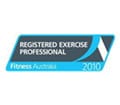

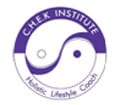
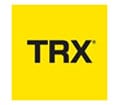




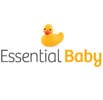
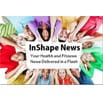



[…] 1. Stretching and trigger point […]